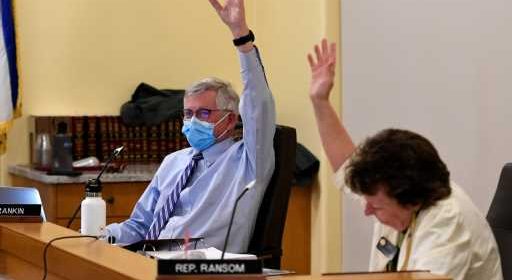Colorado budget: Lawmakers to weigh 3% pay raise for state workers, restoring education cuts and more

Colorado’s proposed 2021-22 state budget debuts Monday, and the legislature’s Joint Budget Committee made a slew of last-minute spending adjustments in recent days, looking to restore pandemic-induced cuts in some places and put money toward some new initiatives, too.
The state’s economic forecast is rosier than expected, with about $5.3 billion to use on new spending or to put into reserves — a roughly fourfold improvement on what was forecast nine months ago. The 2020-21 fiscal year budget was about $30 billion.
Flush with cash, the budget writers believe they can restore cuts to K-12 and higher education funding, grow the state’s reserves above 13% of overall spending, and set aside some $50 million for new spending bills this year. Here are a few of the highlights:
State employee raises
Heading into this budget cycle, Gov. Jared Polis proposed a 2.05% raise for state employees. The budget committee initially bumped that to 2.5%, then another 0.5% after the rosy economic forecast landed earlier this month.
A 3% raise is welcome news for state employees, whose salaries are increasingly noncompetitive compared with private-sector jobs in Colorado. A September state report said, judging by total compensation packages, Colorado “is estimated to be 16.4% below the prevailing market.”
And that has a profound impact on the state’s ability to attract and retain talent, and on worker morale.
Tanesha McQueen, who works for the state’s Division of Youth Services and makes about $36,000 in base salary, said the better-than-expected planned raise helps but does not solve the problem.
“I think that if we look at what a decent raise would be, 3% is not enough for everyone to function and live. We’re looking at housing prices going up,” she said, adding that her rent alone went up by well over 3% in the past year.
She said there’s a lot of turnover in her department.
“Everyone has their different reasons for leaving but a lot of reasons you’re hearing right now are because of money,” she said.
Education funding
Lawmakers now believe they can bring the “budget stabilization factor” — a complex aspect of the state’s school funding formula — down to an 11-year low. The upshot? More per-pupil funding at the K-12 level.
This is made possible largely by the more than $4 billion in federal stimulus that will flow to the state under the American Rescue Plan.
“That, to me, is a huge headline,” said budget committee member Sen. Chris Hansen, a Denver Democrat. The JBC “put in close to $500 million to basically get the state portion back to where it was in (2019-20), and now the federal money will be on top of that foundation.”
Lawmakers also expect to restore higher education funding to pre-pandemic levels. Public colleges and universities saw a 58% reduction in state funding during the budget culling last year, a cut that was not so painful in reality because federal money covered the gap. But lawmakers can’t count on those federal dollars forever and so they need to restore that state funding level sooner than later if they want a functioning higher education system in the state moving forward. They think they can do that this year.
State stimulus grows
Legislative leaders joined Polis in March to announce a $700 million state stimulus program, with spending on transportation infrastructure projects, broadband expansion, small business grants and much more.
Lawmakers said the total amount was always conservative — and they’re bumping it up to $800 million.
This extra $100 million would be spread among a slew of priorities, including schools and rural economic development initiatives. The elements of the state stimulus package should pass through the legislature in the coming weeks.
Cutting down a waitlist
Colorado lawmakers are primed to chip away at the roughly 3,000-person list of adults with intellectual and developmental disabilities waiting on state waivers for housing and 24/7 care provided.
It’ll cost about $20 million annually — the kind of expense the legislature’s Joint Budget Committee wouldn’t have been able to suggest without the increased revenue. Committee member Rep. Kim Ransom could hardly contain her joy.
“Everybody’s really happy,” the Douglas County Republican beamed. “We need to help the most vulnerable in our state that have been waiting, in some instances, for 20 years or more.”
It’s “a very big deal,” said Lloyd Lewis, who runs Arc Thrift Stores and employs hundreds of Coloradans with disabilities. “It’s hard to overestimate how big a deal this is,” he said. “It provides a lifeline, needed support to really help people who truly need it.”
Hansen said he believes the state can buy down the rest of the list in the next four years. Ransom, however, said it’d be a challenge to ramp up staffing capacity to accommodate 3,000 people in just a few years.
“We did what we could for now,” said Democratic Sen. Dominick Moreno of Commerce City, the budget committee chair. “We’ll see what we can do in future years.”
Source: Read Full Article
